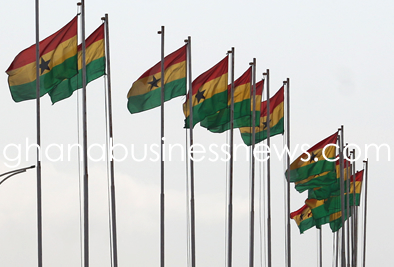Story of the Ghana flag
 As a banner of pride, the national flag of Ghana is more than just a piece of fabric; it is a vibrant symbol of the nation’s values, history, and aspirations. Designed to reflect Ghana’s struggle for independence and its cultural richness, the flag has become an emblem of pride for Ghanaians and a beacon of African unity.
As a banner of pride, the national flag of Ghana is more than just a piece of fabric; it is a vibrant symbol of the nation’s values, history, and aspirations. Designed to reflect Ghana’s struggle for independence and its cultural richness, the flag has become an emblem of pride for Ghanaians and a beacon of African unity.
Origins and influences: A tale of independence
Adopted on March 6, 1957, as Ghana emerged from British colonial rule, the flag drew inspiration from Ethiopia’s own flag. This Pan-African connection was significant, marking Ghana as the first African country to use these specific colours in its national banner. The design, created by Theodosia Salome Okoh, was influenced by the song “Yen Ara Asaase Ni” by Dr. Ephraim Amu, which extolled the sacrifices of the nation’s forefathers.
The flag features three horizontal stripes—red at the top, gold in the middle, and green at the bottom—with a black five-pointed star centered in the gold stripe. Each colour and symbol were chosen with deep significance: red symbolizes the blood shed for independence, gold represents the country’s mineral wealth, green denotes the rich vegetation, and the black star stands for African freedom and unity.
Challenges in production: The quest for authenticity
Despite its profound symbolism, the flag’s production has faced challenges. Unauthorized manufacturers have compromised the flag’s quality, producing inferior versions that misrepresent its true colours and dimensions. This issue arose in part because of a decrease in government funding for the State Protocol Department (SPD), which traditionally oversaw flag production.
During the Ghana at 50 celebrations in 2007 and other major events, issues with flag quality became evident. Many flags produced for these occasions did not meet the official standards, highlighting the need for stringent controls and quality assurance in flag manufacturing.
A call for respect and regulation
The importance of maintaining the flag’s integrity cannot be overstated. The Ghana flag is not just a national symbol but a reflection of the country’s identity and values. Therefore, it is crucial that all flags be produced according to official specifications, with approval from the SPD to ensure they meet the required standards.
Educational efforts are needed to raise public awareness about the flag’s significance and the correct manufacturing processes. Forming an association of approved flag manufacturers could help streamline production and maintain high standards.
Cultural impact and global recognition
Beyond its national significance, the flag of Ghana has made its mark globally. It was proudly displayed during international events like the 2006 FIFA World Cup and the 2008 CAF tournament, showcasing Ghana’s vibrant culture and spirit on the world stage. Its colours and symbols resonate not only with Ghanaians but with people across the globe, representing a shared aspiration for freedom and unity.
A flag of unity and pride
Ghana’s national flag stands as a testament to the country’s rich history and enduring values. It is a powerful symbol of the sacrifices made for independence, the wealth and resources of the nation, and the shared vision of a united Africa. As such, it deserves the utmost respect and care in its production and use. By honouring the flag’s legacy and ensuring its proper representation, Ghanaians can continue to celebrate their heritage and inspire future generations.
By Innocent Samuel Appiah
Copyright ©2024 by NewsBridge Africa
All rights reserved. This article or any portion thereof may not be reproduced or used in any manner whatsoever without the express written permission of the publisher except for the use of brief quotations in reviews.
